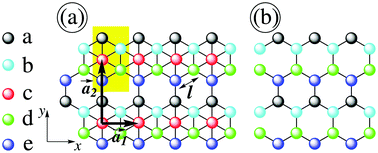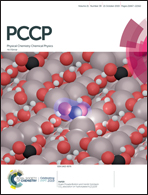β12-Borophene becomes a semiconductor and semimetal via a perpendicular electric field and dilute charged impurity
Abstract
In this paper, the possible electronic phase transitions of β12-borophene crystal are examined using a five-band tight-binding calculation. For different tight-binding models, the Green's function technique is employed for the electronic density of states (DOS). We focus on the modulation of the DOS around the Fermi level with a perpendicular electric field and the dilute charged impurity. The steps to incorporate the effects of external electric field and charged impurity are also detailed with the local Hamiltonian model and the Born approximation, respectively. Our calculations show that the inversion symmetric model is the proper model to discuss the metallic phase of the system, entailing different results compared to the homogeneous model. We find that the electric field opens a tunable band gap and a metal-to-p-doped semiconductor phase transition emerges at the strong perpendicular electric field. The influence of impurity scattering potential on the electronic phase of β12-borophene is much larger than the impurity concentration, in which a metal-to-n-doped semiconductor (metal-to-semimetal) transition takes place at high scattering potentials for the homogeneous (inversion symmetric) model, whereas there is no transition when the impurity concentration is changed. Thereby, producing semimetallic/semiconducting properties by applying an appropriate external electric field and dilute charged impurities paves the way for the realization of β12-borophene-based nano-optoelectronic devices.

- This article is part of the themed collection: 2019 PCCP HOT Articles


 Please wait while we load your content...
Please wait while we load your content...